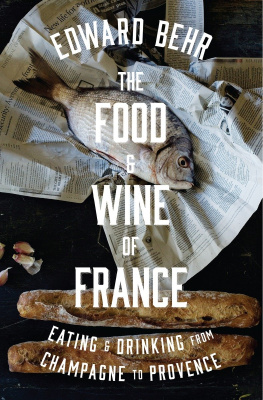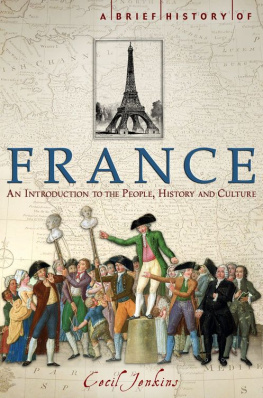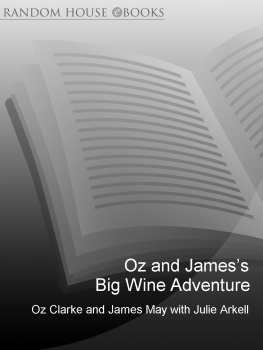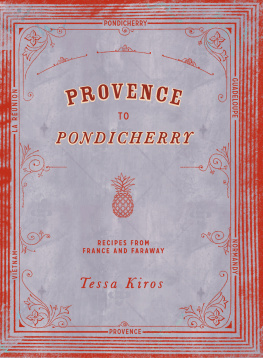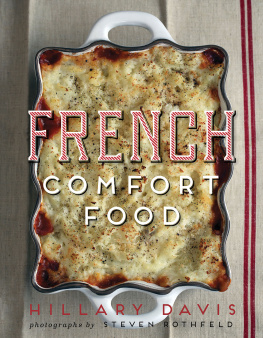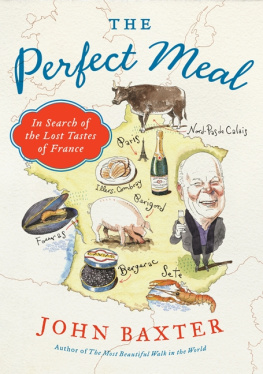Although only one name is on the cover, this book was a collaborative effort, and many debts of gratitude are owed.
In the course of researching the book, I solicited the views and enlisted the help of numerous people, and most of them could not have been more generous with their time and thoughts. There are far too many to name here, but my thanks to all. A handful of people were kind enough to read parts of the manuscript and to offer feedback and suggestions. Many thanks to Steven Kaplan, Colman Andrews, Mark Williamson, Nicholas Lander, Steven Jenkins, Rahul Jacob, Tyler Colman, David Schildknecht, Gwen Robinson, Tyler Cowen, and Guy Gteau.
One of the smartest things Ive ever done as a journalist was writing to Jacob Weisberg to broach the possibility of doing wine pieces for Slate . My association with Slate is a source of immense pleasure and pride. My editor, Julia Turner, is a joy to work with; my thanks to her, as well as to Jacob and to David Plotz. I am also grateful to the Financial Times and wish to thank the following people there: Rahul Jacob, Jancis Robinson, Nicholas Lander, Charles Morris, Tom OSullivan, and David Owen.
I was fortunate to work with several terrific people at Bloomsbury. I am indebted to Annik La Farge for the confidence that she showed in me, and to Nick Trautwein for his skillful editing and infinite patience. I knew, from the moment that I first spoke with Nick, that he was exactly the kind of editor I wanted: intelligent, low-key, and with a sense of humor. I feel very lucky to have had him as a partner in this project. Michael Fishwick of Bloomsbury in London showed great enthusiasm for the book throughout its development and made some superb suggestions, as well. Many thanks also to Jenny Miyasaki for so masterfully guiding me through the production process, and to Janet McDonald, whose copyediting was amazingly thorough and much appreciated.
My agent, Larry Weissman, patted me on the back when I deserved it, read me the riot act when I needed it, and has become a very good friend along the way. His excitement about this book reinforced mine, and he has been an invaluable source of counsel and support. His wife and partner, Sascha, offered excellent advice with the proposal, and my thanks to her, as well.
Without Georges Martel, my wife and I might never have become romantically involved, the idea for this book might never have germinated, and researching it would not have been possible. Georges is family, and my debt to him is enormous. Nor would the book have been feasible without my in-laws, Joseph and Keiko Brennan, who were of great help to my wife during the many weeks that I was away researching the book and during the many months when I was sequestered in my office writing it. My brother, David Steinberger, offered much appreciated support and encouragement, as well. I also want to thank Brian Shames and Eric Tagliacozzo, dear friends both.
My grandfather, Dr. Laszlo Steinberger, died a few days after I turned in the manuscript. He was a month shy of his ninety-sixth birthday, and while I had hoped he would be around to see the book in print, he at least had the satisfaction of knowing that it was headed to the printer. This book is also dedicated to him, as well as to the memory of my other grandparents, Violet Steinberger and Dr. Max and Helen Alpert.
I wish to express my gratitude to my parents, John and Rita Steinberger. I left a promising job on Wall Street to pursue a career as a journalist. Most parents would have been horrified; mine encouraged me to give up investment banking for writing, and they have been a source of steadfast support ever since. I hope this book, in some small way, repays their faith in me.
Lastly, I want to thank my wife, Kathy Brennan, and my children, James and Ava. I long ago noticed that authors, in acknowledging their debts of gratitude, invariably speak of the burdens that book writing imposes on their families. Id hoped to avoid sounding that hackneyed refrain by not allowing the book to be a burden on mine. No such luck: As challenging as this project was for me, it was doubly so for them. No young children should have to suffer the sight of their unshaven father pacing the halls like a zombie day after day, muttering to himself. As for what my wife enduredwell, lets just say that mile Jung was absolutely right: She is mango woman, and I cant begin to thank her enough for all that she did to make this book possible. Kathy, James, and Ava should know that they are my rock and inspiration, and this book is as much theirs as it is mine.
To Kathy, James, and Ava
From photos, I knew that the exterior of Paul Bocuses eponymous restaurant in the village of Collonges au Mont dOr, near Lyon, was painted in flamboyant shades of red, yellow, and orange and that it was adorned with decals of roosters, cakes, and roast chickens. But seeing it for the first time in person, on a sunny November morning in 2006, I decided it wasnt quite as hideous as the pictures had led me to believe; it just looked like a particularly colorful music box. Nor, contrary to my expectations, was the restaurant purely a monument to Bocuse. The courtyard was enclosed by a long wall decorated with murals of Antoine Carme, Fernand Point, the Troisgros brothers, andfunnily enoughJulia Child.
The restaurants bar was a shrine, but it was a shrine to Point; photos of Bocuses mentor filled the room. Bocuse hadnt entirely cut himself out of the scene: Numerous pictures of him were scattered around the restaurant. One framed image stood out: Entitled The Last Supper, it showed Bocuse and a dozen other prominent French chefs, all dressed in tan sackcloth and seated at a long table bearing glasses of wine and loaves of bread. Bocuse, cast in the role of Jesus, was at the center of the shot, surrounded by the twelve apostles and gazing benevolently at the camera with his hands resting on the table and open to the sky. For all its cheesiness, the photo perfectly captured Bocuses place in the gastronomic firmament. He was Frances most famous chef and was widely regarded as the chief custodian of a culinary tradition stretching back hundreds of years.
The elderly man with puffy raccoon eyes who shuffled into the lounge that morning bore only a passing resemblance to the dashing figure in the picture. But despite his frail appearance, the eighty-year-old chef maintained a schedule that would have exhausted people half his age; just hours after meeting with me, he would be off on a four-day trip to Japan, where he was considered to be a virtual deity. Dressed in black trousers and a black sweater, Bocuse greeted me warmly and directed me to a table in the middle of the room. I had been told that he liked to put on a show for visiting journalists, and it didnt take long for the extravaganza to begin. About five minutes into the interview, a reporter and a photographer from the newspaper Le Figaro arrived and were ushered into the kitchen. (Evidently, Bocuse had been double-booked for the morning.) A few minutes later, Monsieur Paul, as he was called, was summoned to join them. After another ten minutes, the kitchen doors swung open and I was beckoned inside. There, I found Bocuse standing behind an island counter in his chefs whites and toque, meticulously arranging a half-dozen or so fully feathered dead birds and rabbits. In this garb, he looked like another major religious figure: The creaseless, full-length white apron and the way that it clung to his body called to mind papal vestments.
It turned out the Figaro team was there to shoot a holiday spread featuring the great man. For about fifteen minutes, the kitchen came to a halt as Bocuses crew gathered around him to pose. The veteran chef needed no coaching: As soon as the camera started clicking, he tilted his head slightly upward and, suddenly, he was no longer the pope but the famous coq gaulois , the rooster whose imperious manner symbolized French pride and hauteur. The kitchen scene finished, Bocuse led me and the Figaro pair back to the bar, where he instructed a waiter to bring a bottle of wine. I assumed we were going to have a mid-morning aperitif, and we did. But the wine was also intended as a prop for the next set of photos, this one of Bocuse table , raising a glass in celebration. After snapping those pictures, the photographer asked me to sit next to Bocuse and to clink glasses with him. I did as told. No, look each other in the eyes, like lovers, he commanded with a laugh. I lifted my glass again and cast a sheepish glance at Bocuse. I was stunned by what greeted mea facial expression so amorous that for a moment I feared he was going to try to lock lips. The man knew how to play the camera.
Next page


